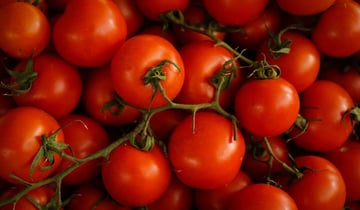Following a two-year study looking at more than 7,000 spice batches tested, the FDA has reported that spices are more than twice as likely as any other imported food to be contaminated with salmonella. The results were part of a nationwide study analyzing the presence of salmonella in retail spices found in supermarkets, ethnic markets, discount stores and online.
Perhaps the most alarming finding of the study was that the problem isn't localized to any specific region or a particular spice. Of the nearly 80 countries included in the study, about half had a salmonella problem. And the issue isn't specific to any particular spice. Basil, black pepper, oregano, paprika, red pepper, coriander, cumin, curry powder, garlic, sesame seed, and white pepper were all named as sources of salmonella.
The exact impact on consumers is still being analyzed since many spices are treated once they are imported, but the FDA will next look deeper with additional research at the retail-level. For more background, here are highlights from the FDA's Q&A released this week:
What has the FDA learned about the safety of spices?
To learn more about the public health risks associated with spices and help us in developing plans to improve the safety of spices, we developed a draft risk profile, which we released in October 2013. The objectives of the risk profile included describing the nature and extent of the public health risk posed by the consumption of spices in the U.S., describing and evaluating current strategies used to reduce the public health risk posed by the consumption of spices, identify additional strategies that could be used, and identifying critical gaps in the data we currently have available to us.
What did the risk profile find?
The draft risk profile determined that the presence of pathogens, such as Salmonella, and filth in spices is a systemic challenge and that the problem relates in part to poor or inconsistent use of appropriate controls to prevent contamination. Spice shipments from 79 countries were examined for Salmonella, and we found that 37 of the 79 countries had Salmonella-contaminated shipments, indicating that contamination of spice shipments with Salmonella is not limited to just a few source countries. Spice shipments offered for entry into the U.S. had an overall prevalence for Salmonella of approximately 6.6 percent during the 2007 to 2009 fiscal years, about twice the average prevalence of all other imported, FDA-regulated foods. We also found that approximately 12 percent of the spice shipments offered for entry to the U.S. during a three-year period (FY 2007 to FY 2009) were adulterated with filth such as insects and animal hair, which can result from inadequate packing or storage conditions.
However, we noted in the study an important data gap in that we were missing key information about the level of contamination of spices at retail in the U.S. When we began conducting the risk profile, we asked the public for any data but did not receive information about contamination rates at retail. Because many imported spices are treated after entry to the U.S. to reduce contamination before they are sold to consumers, we knew that the 6.6 percent contamination rate found at the import level did not reflect what was actually reaching consumers. We needed retail data to better evaluate the true risk to consumers.
Do you now have the retail data?
Yes, we conducted a two-year, nationwide study to collect data on the presence of Salmonella in retail packages which you would find in supermarkets, ethnic markets, discount stores, and on the internet. Domestically produced and imported spices were included in the 7,249 samples collected of the following spices: basil, black pepper, oregano, paprika, red pepper (capsicum), coriander, cumin, curry powder, garlic, sesame seed and white pepper. We are still analyzing the data and are starting to have preliminary results.
Is there a difference in safety between imported and domestic spices?
We do not have contamination data specifically for domestically produced spices. Most of the U.S. spice supply is imported, with some exceptions. Most of the dehydrated onion used in the U.S. is produced in the U.S. U.S. farms also produce significant amounts of the U.S. supply of dehydrated garlic, capsicum and mustard seed.
When will you be able to share the results?
We hope to have our analysis of the retail sampling completed as soon as possible and will post our results on our web site.
What steps is FDA taking to improve the safety of spices?
FSMA, which we are now implementing, will help us improve spice safety because the FSMA rules focus on preventing hazards and on tightening controls in the supply chain. The FSMA rules address both domestically produced and imported foods. For example, the preventive controls rule requires food facilities, including those that manufacture spices, to conduct a hazard analysis, identify hazards reasonably likely to occur, and establish preventive controls for such hazards. The foreign supplier verification rule requires that importers verify that the foods they import are produced using processes and procedures that ensure the same level of safety as food produced in the U.S. Produce safety requirements may apply to certain types of spice source plants. Further, FDA is establishing a program for the accreditation of third-party certifiers to conduct rigorous, objective food safety audits.
In addition, in recent years, the agency has increased its inspections of spice manufacturing facilities.
FDA also works closely with its partners in other countries to share information on ways to improve spice safety and has staff permanently stationed in China, India, Europe, Latin America, Middle East and North Africa, and Sub-Saharan Africa. In India, the leading country of origin for U.S. spice importation, the FDA maintains offices in New Delhi and Mumbai. FDA is working with several partners to develop a training center focused on supply chain management for spices and botanical ingredients. The goal of the center is to establish a cadre of in-country experts who can offer training in all aspects of food safety management throughout the supply chain. FDA scientists also will participate in the newly formed Codex Committee on Spices and Culinary Herbs. Codex is an international organization that sets food safety standards, guidelines and codes of practice.
Looking for tips on how to get greater supply chain traceability implemented in your organization? Check out our free eBook, Selling the C-Suite on Supply Chain Traceability Software.
Other posts you might be interested in
View All Posts
Traceability
4 min read
| February 24, 2016
Beyond Safety: Benefits of Food Supply Chain Traceability
Read More
Traceability
4 min read
| November 12, 2019
From Tomato Vine to Tomato Sauce: A Look into the Visibility Traceability Provides
Read More
7 min read
| May 12, 2023


